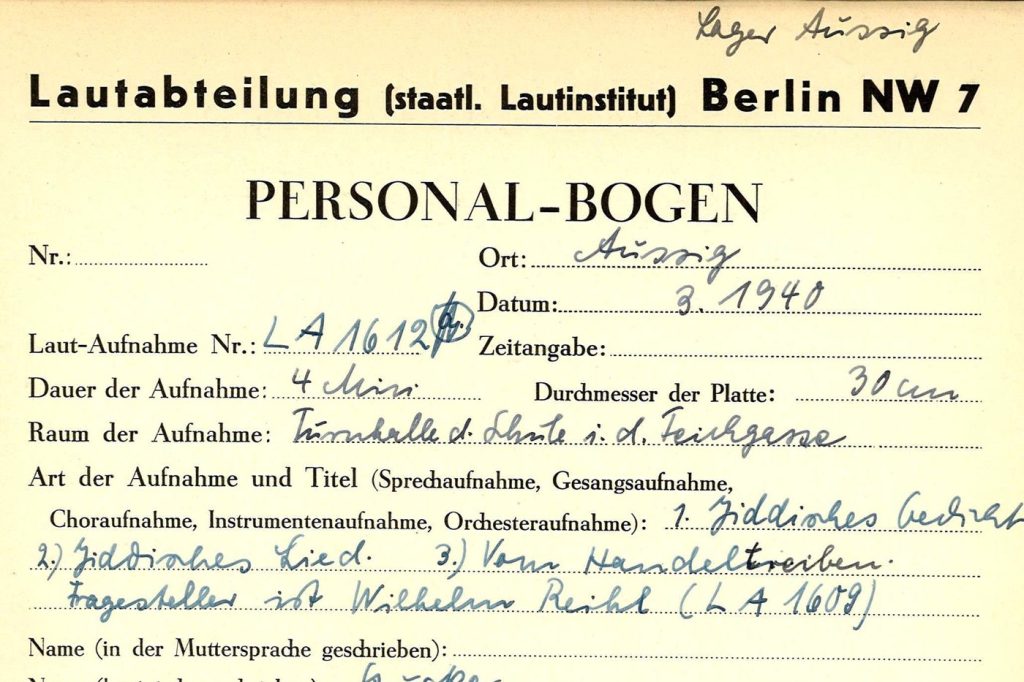The Humboldt Lab will feature the audio recordings of Emilie S. – a trader who was resettled in the early 1940s
‘I am Protestant-German, but I will tell you something in Yiddish,’ says Emilie S. at the beginning of the audio recording, which was made in 1940 in a resettlement camp in what is now the Czech Republic. The recording has puzzled researchers: Why did the late 20-year-old speak Yiddish so well that she could recite poems and sing songs? Why was the recording of interest to the Berlin Sound Archive, which was collecting German dialects at the time?
As a trader, Emilie S. had contact with different people and travelled a lot. Perhaps this is how she learnt Yiddish. She was a so-called ethnic German who lived in Luzk in eastern Poland but felt she belonged to German culture. She was resettled as part of the National Socialist ethnic policy. Emilie S. travelled via the Czech Republic to western Poland, which was occupied by the Wehrmacht at the time. She survived the war and fled to Germany with her husband, an SS-Rottenführer.
The Jewish community in the town from which Emilie S. came was almost completely wiped out during the Second World War. It is unclear whether there are any other recordings of the Yiddish spoken in Lutsk at that time. Emilie S.’s recording is probably one of the last testimonies from this region.
The audio recording can be heard in the Humboldt Lab exhibition at the Humboldt Forum. In the interview, linguist Antonia von Trott zu Solz explains what is known about Emilie S. and which questions have remained unanswered.
